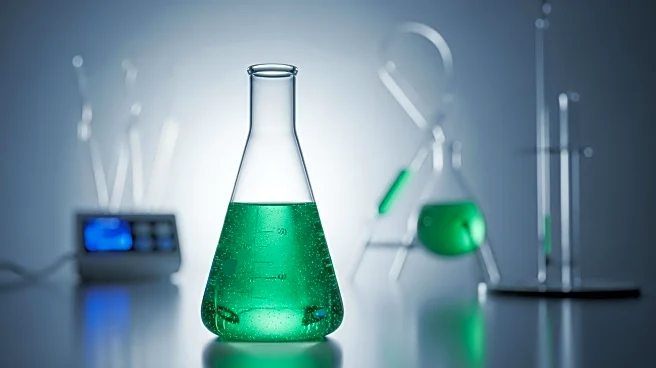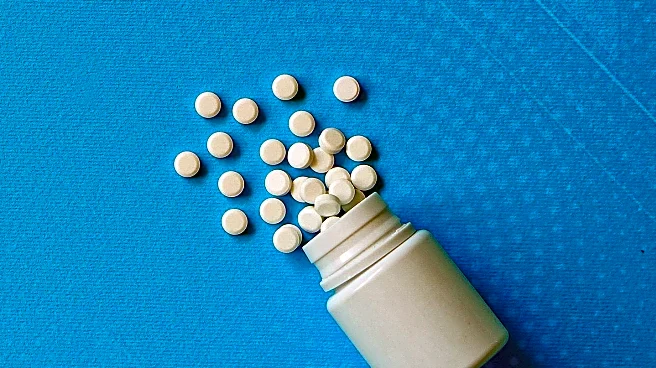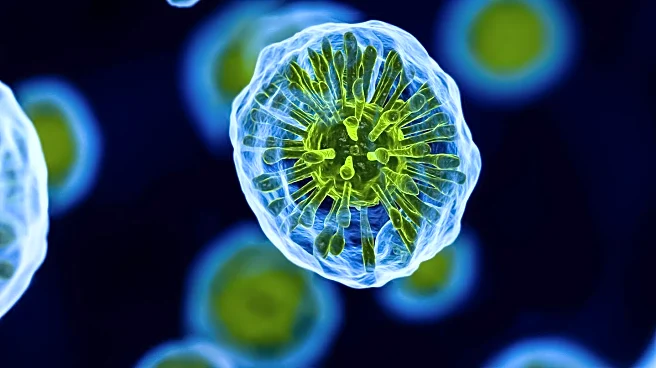What is the story about?
What's Happening?
Researchers from University College London and Imperial College London have published a study in Nature Microbiology detailing how polymyxin antibiotics can effectively disrupt the outer membrane of harmful bacteria, specifically targeting lipopolysaccharide (LPS) to cause cell death. These antibiotics, discovered over 80 years ago, are considered a last-resort treatment for infections caused by Gram-negative bacteria. The study highlights that polymyxin B (PmB) can rapidly cause structural changes in E. coli, leading to the shedding of its protective outer layer. However, the antibiotic's effectiveness is limited to active bacterial cells, as dormant cells do not produce the necessary 'armor' for the antibiotic to target.
Why It's Important?
The findings are significant in the fight against antimicrobial resistance, a growing concern with over 2.8 million cases annually in the U.S. alone. Polymyxins, despite their side effects, offer a potential solution to combat multi-drug resistant bacteria. Understanding the conditions under which these antibiotics are effective can lead to improved treatment strategies, potentially involving combinations with other treatments to activate dormant bacteria. This research could pave the way for more effective use of existing antibiotics, reducing the reliance on developing new drugs.
What's Next?
The study suggests exploring strategies to enhance the effectiveness of polymyxins, such as combining them with treatments that stimulate bacterial armor production. This approach could potentially awaken dormant bacteria, making them susceptible to antibiotic treatment. Further research is needed to validate these strategies and assess their clinical applicability.
Beyond the Headlines
The study challenges the long-held assumption that antibiotics targeting bacterial armor are effective against both active and dormant bacteria. This revelation underscores the complexity of bacterial survival mechanisms and the need for innovative approaches in antibiotic therapy. The research also highlights the importance of considering bacterial states when evaluating antibiotic efficacy.
AI Generated Content
Do you find this article useful?













